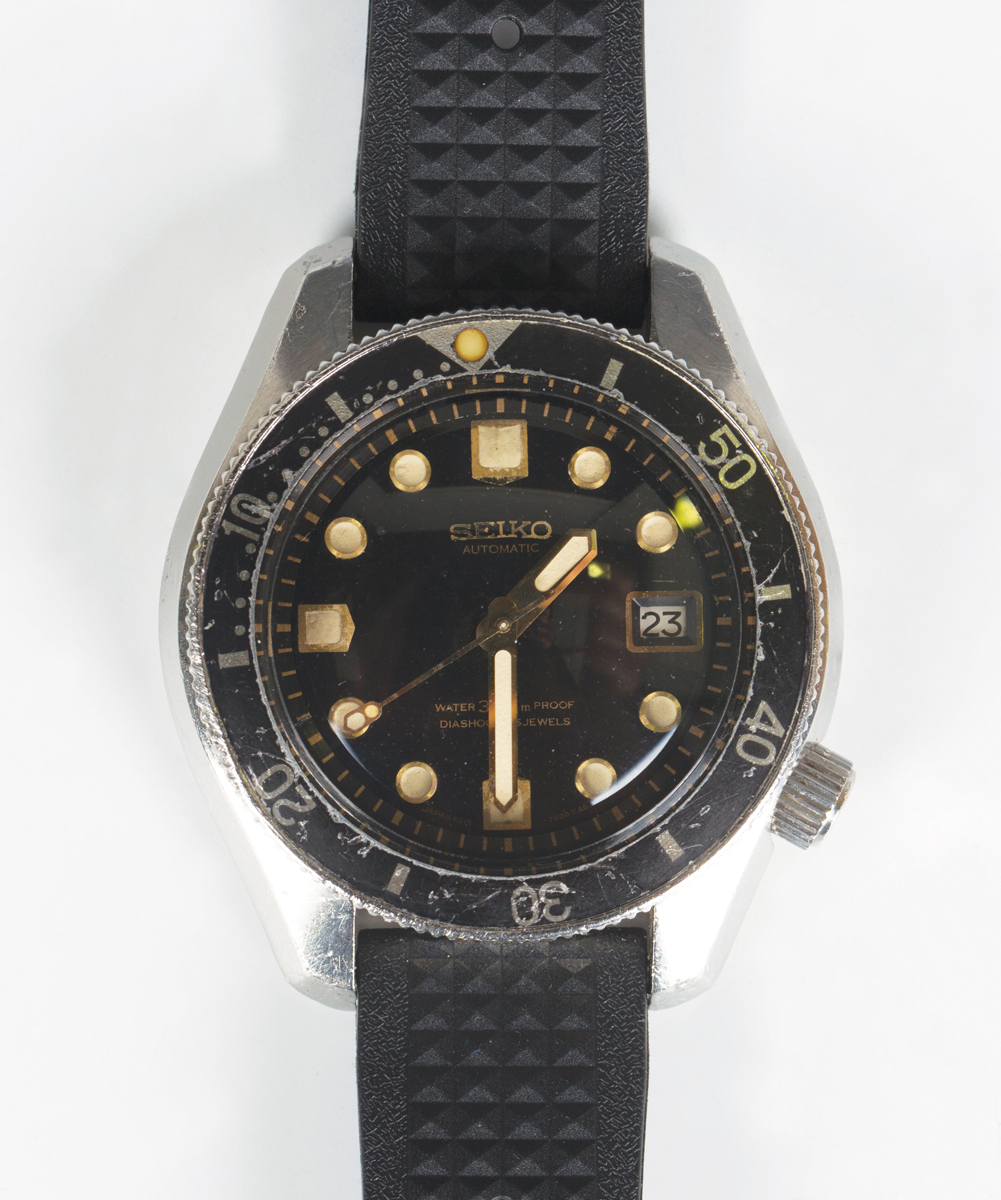
Watches which tell the time with exceptional accuracy can be bought for very little and yet we have an enduring fascination with mechanical watches which continue to attract the attention of today’s collectors.
Amongst these are the diving watches inspired by the Rolex Submariner which was conceived in 1953 by Rolex board member and keen diver, René- Paul Jeanneret. He identified the potential for a diving watch which could also be worn every day.
The rare Omega Seamaster Automatic 1000m/3300ft Professional stainless steel cased diver’s bracelet wristwatch dates from the 1970s. The Omega Seamaster 1000 was nicknamed ‘The Grand’ by virtue of its 1000 metre rating and with a total run believed to be fewer than 500, it is regarded as a rare watch. The first ‘Grand’ was personally given by Prince Rainier III of Monaco to Jacques Cousteau, who was director of the Monaco Oceanographic Research Institute and Museum between 1957 and 1988. The French underwater explorer, Jacques Cousteau, invented the aqua-lung in 1943. His underwater adventures aboard the ship Calypso would be made famous by the BBC television series of the 1960s and 1970s.Cousteau declared the Omega Seamaster 1000 to be his favourite diving watch.
In the 1970s Omega was viewed as being more revolutionary and professionally focused than the higher priced Rolex watches.
In the 1960s Japan’s economy grew at an extraordinary rate. It’s well educated work force moved from low-productivity rural jobs into modern manufacturing and services. The US and European economies began to grow post-war providing demand whilst prices for raw materials remained stable and Japan boomed.
Japanese goods entered western markets and began to establish her international brands. Amongst these was the watchmaker Seiko which quickly became recognised for its innovation, precision and quality. The company began to develop diving watches in the 1960s to compete with Swiss manufacturers like Omega and Rolex. The similarities of its style and design with its Swiss competitors is not accidental as east meets west.

The 1967, Seiko released the rare reference 6215-7000 which featured water resistance up to 300 meters. The monobloc case had a screw down crown to protect the watch. It was a technically very complex watch and was produced in small numbers over about a year. It was the reputation of watches like this one that established Seiko’s brand which would come to dominate its Swiss competitors in the Quartz movement era that followed.
Despite their worn condition these two rare diving watches realised £3600 and £7400 respectively in Toovey’s specialist watch sales.
We have a fascination with handmade watches and value them far more highly than homogenous, mass produced timepieces. Interest, demand and prices continue to rise in this exciting field of collecting.